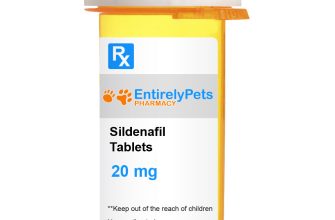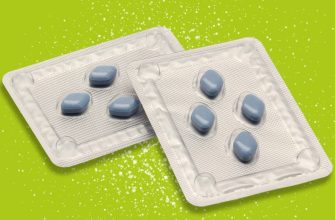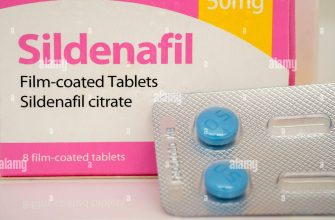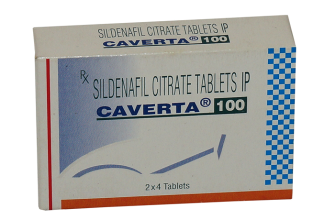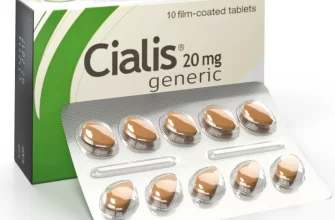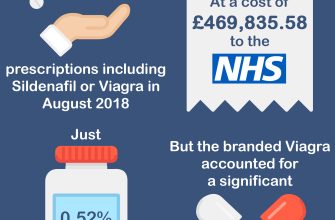Vardenafil tadalafil sildenafil
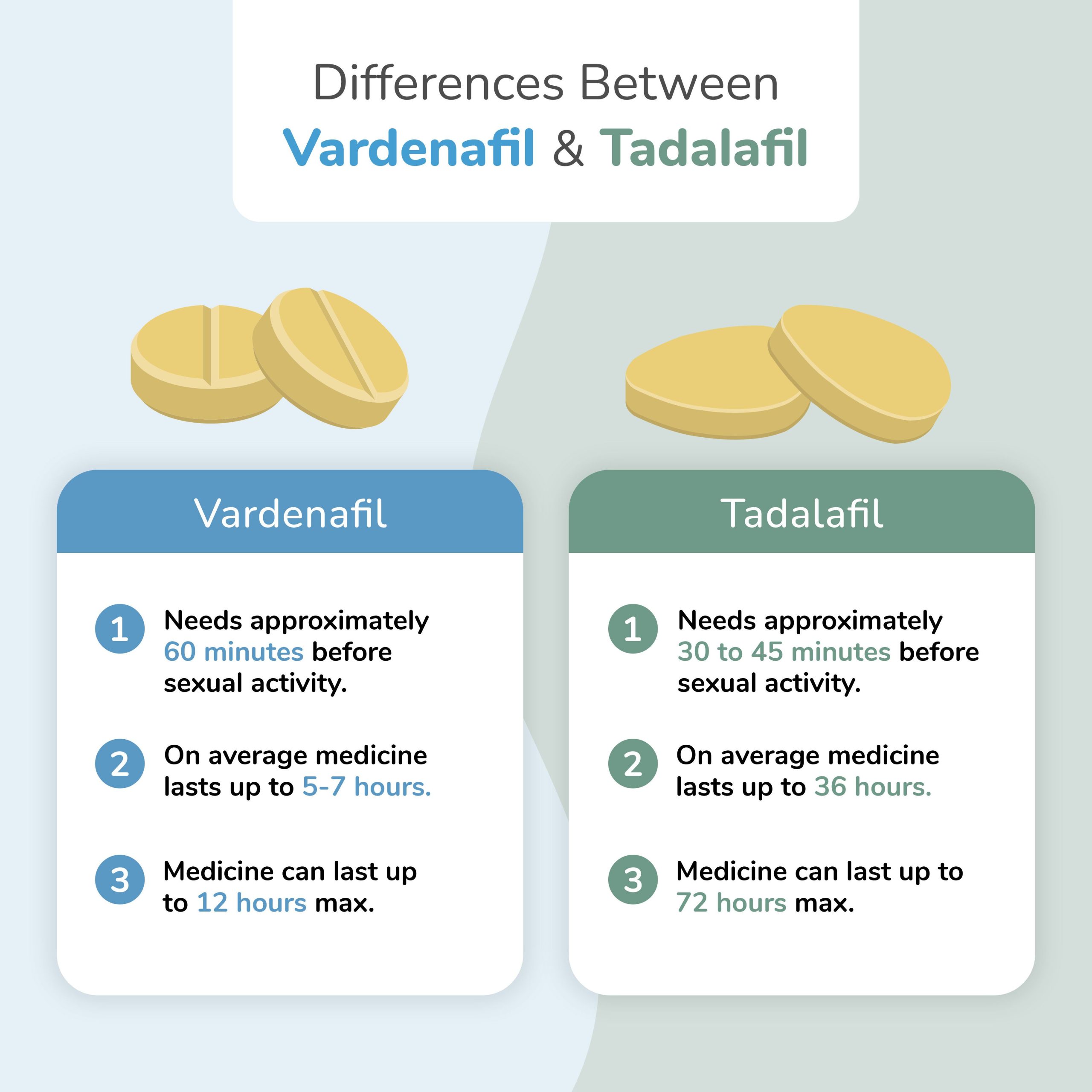
If you are exploring options for treating erectile dysfunction, consider Vardenafil, Tadalafil, and Sildenafil. Each of these medications belongs to the phosphodiesterase type 5 (PDE5) inhibitors class, which enhances blood flow to the penis during sexual stimulation. Understanding their differences can help you choose the right treatment for your needs.
Vardenafil is known for its rapid onset, typically working within 30 minutes and lasting up to 6 hours. Its absorption can be affected by high-fat meals, so taking it on an empty stomach can optimize its effectiveness. This medication is particularly suitable for those who want a flexible approach to spontaneity while maintaining confidence during intimate moments.
Tadalafil stands out with its long duration of action, lasting up to 36 hours. This makes it a great option for those preferring a more extended window for sexual activity. Tadalafil can be taken daily or as needed, providing versatility in managing erectile dysfunction. Additionally, it can be taken with or without food, making it convenient for various lifestyles.
Sildenafil, commonly recognized under the brand name Viagra, usually takes about 30 to 60 minutes to take effect and lasts for approximately 4 to 5 hours. Like Vardenafil, its absorption can be hindered by fatty foods, so timing your dose can play a significant role in its efficacy.
- Comparative Analysis of Vardenafil, Tadalafil, and Sildenafil
- Pharmacokinetics and Duration of Action
- Side Effects and Considerations
- Vardenafil: Efficacy and Dosage Guidelines
- Tadalafil: Unique Properties and Benefits
- Sildenafil: Historical Significance and Current Use
- Historical Background
- Current Applications
- Side Effects and Drug Interactions of Each Medication
- Vardenafil
- Tadalafil
- Patient Considerations: Choosing the Right Treatment
- Assess Your Health Status
- Consider Lifestyle Factors
- Recent Research and Future Directions in ED Treatments
- Findings from Clinical Trials
- Emerging Alternatives
Comparative Analysis of Vardenafil, Tadalafil, and Sildenafil
Vardenafil, Tadalafil, and Sildenafil are all phosphodiesterase type 5 (PDE5) inhibitors, primarily used to treat erectile dysfunction (ED). Understanding their unique properties helps in selecting the ideal medication considering effectiveness, duration, side effects, and interactions.
Pharmacokinetics and Duration of Action
Each of these medications has distinct pharmacokinetic profiles. Vardenafil begins to work within 30 to 60 minutes, maintaining effectiveness for about 4 to 5 hours. Tadalafil presents a longer window of action. It can take effect in approximately 30 minutes, but it is known for lasting up to 36 hours, providing flexibility for spontaneous intimacy. Sildenafil also activates in about 30 to 60 minutes but lasts about 4 to 6 hours.
| Medication |
Onset (minutes) |
Duration (hours) |
| Vardenafil |
30 – 60 |
4 – 5 |
| Tadalafil |
30 |
36 |
| Sildenafil |
30 – 60 |
4 – 6 |
Side Effects and Considerations
Side effects are common with all three medications but can vary in incidence. Vardenafil and Sildenafil share similar side effects, including headaches, flushing, and nasal congestion. Tadalafil is less likely to cause flushing but may lead to muscle aches due to its longer half-life. Consider the patient’s health status and other medications, as Tadalafil has fewer drug interactions compared to Vardenafil and Sildenafil, allowing for broader use in patients taking additional prescriptions.
Selecting between these options requires assessing personal preferences and medical history. For prolonged effectiveness, Tadalafil is often preferred, while Vardenafil and Sildenafil are suitable for occasions requiring a shorter duration of action. Consulting with a healthcare professional ensures the choice aligns with individual needs and health considerations.
Vardenafil: Efficacy and Dosage Guidelines
Vardenafil demonstrates significant efficacy in treating erectile dysfunction (ED). Clinical studies indicate that approximately 75% of men who use vardenafil achieve an erection suitable for sexual intercourse. The onset of action typically occurs within 30 to 60 minutes, with effects lasting up to 6 hours.
For optimal results, initiate treatment with a dose of 10 mg taken orally approximately 60 minutes prior to sexual activity. If the 10 mg dose does not produce the desired effects, a healthcare provider may recommend increasing the dose to 20 mg. However, the daily maximum dosage should not exceed 20 mg. Those who experience unfavourable side effects may be advised to decrease the dosage to 5 mg.
Vardenafil can be taken with or without food, but it’s wise to avoid high-fat meals, as they may delay absorption and reduce the medication’s effectiveness. Always consult with a healthcare professional before making any changes to the dosage regimen or frequency of use.
Regular communication with a healthcare provider can help to assess the effectiveness and adjust the treatment as necessary, ensuring a tailored approach to each individual’s needs.
Tadalafil: Unique Properties and Benefits
Tadalafil stands out due to its long-lasting effects, remaining active for up to 36 hours. This extended duration allows for more spontaneous intimacy, relieving the pressure of timing often associated with other medications.
Prospective users appreciate tadalafil’s rapid onset. It typically begins to work within 30 to 60 minutes after ingestion, providing a quick solution for erectile dysfunction.
One of tadalafil’s unique properties is its selective action on the phosphodiesterase type 5 (PDE5) enzyme. By inhibiting this enzyme, tadalafil enhances blood flow to the penis during sexual stimulation, promoting stronger erections.
Tadalafil also offers the option of a daily low-dose regimen. This approach is beneficial for those who prefer to avoid planning sexual activities around medication timing. Daily use ensures a steady level of the drug in the system, supporting spontaneity.
Another advantage is tadalafil’s relatively mild side effect profile. While common side effects may include headaches and flushing, they tend to be less severe compared to other medications in the same class.
The medication also treats benign prostatic hyperplasia (BPH), alleviating urinary symptoms associated with an enlarged prostate. This dual benefit enhances its appeal for men experiencing both erectile dysfunction and BPH.
Additionally, tadalafil is well-tolerated with various food interactions. It can be taken with or without food, presenting flexibility in the user’s routine.
Consultation with a healthcare professional is recommended for personalized advice and to ensure safety, particularly for those with underlying health conditions or who are taking other medications.
Sildenafil: Historical Significance and Current Use
Sildenafil, commonly recognized under the brand name Viagra, plays a pivotal role in treating erectile dysfunction. Its introduction in the late 1990s marked a significant milestone in sexual health, revolutionizing the approach to male impotence. Initially studied for its potential to treat angina, researchers discovered sildenafil’s unexpected ability to enhance blood flow to the penis, leading to its reclassification and commercial release.
Historical Background
- Sildenafil was originally developed by Pfizer in the 1980s as a heart medication.
- Clinical trials in 1992 revealed its effectiveness in inducing penile erection.
- Viagra received FDA approval in March 1998, quickly gaining popularity.
The impact was immediate. Sildenafil transformed the conversation around erectile dysfunction, reducing stigma and encouraging open discussions. It provided a solution for millions experiencing this condition, emphasizing both physical and emotional well-being.
Current Applications
Today, sildenafil is widely prescribed not only for erectile dysfunction but also for pulmonary arterial hypertension under the brand name Revatio. Its mechanism as a phosphodiesterase type 5 (PDE5) inhibitor enhances nitric oxide’s effects, improving blood flow and reducing arterial pressure.
- Commonly prescribed dosage for erectile dysfunction: 50 mg, taken as needed.
- Recommended timing: Approximately 30 minutes to 1 hour before sexual activity.
- Onset of action: Typically within 30 minutes, lasting up to 4 hours.
Healthcare providers continuously advocate for patient education on sildenafil, addressing concerns about side effects such as headaches, flushing, or dyspepsia. Addressing misconceptions about its use fosters informed decisions, maximizing satisfaction with treatment.
With ongoing research, sildenafil’s future potential may expand. Evidence is emerging regarding its benefits in alternative conditions, but careful evaluation and consultation with a healthcare professional remain crucial.
Side Effects and Drug Interactions of Each Medication
Vardenafil, tadalafil, and sildenafil, while effective in treating erectile dysfunction, each present specific side effects and potential drug interactions that users should consider carefully.
Vardenafil
Common side effects of vardenafil include headaches, flushing, nasal congestion, and upset stomach. Rare but serious effects may involve sudden vision or hearing loss. Users taking nitrates for heart conditions face a significant interaction risk, which can lead to dangerously low blood pressure. It’s advisable to inform your healthcare provider of all medications being taken to avoid harmful interactions.
Tadalafil
Tadalafil commonly causes back pain, headache, and muscle aches, typically resolving within a few hours. Gastrointestinal upset and flushing are also reported. This medication interacts with nitrates similarly to vardenafil, leading to severe hypotension. Additionally, individuals on alpha-blockers for hypertension should exercise caution, as this combination can also reduce blood pressure excessively.
Sildenafil generally leads to headaches, flushing, dyspepsia, and visual disturbances, such as a bluish tint to vision. Mixing it with nitrates poses the same risk of low blood pressure. Caution is advised with certain antifungals and antibiotics, which may alter sildenafil effectiveness or increase side effects. Always consult with a healthcare professional regarding all prescriptions and over-the-counter medications to manage potential interactions effectively.
Patient Considerations: Choosing the Right Treatment
Choose treatment based on your individual needs and health circumstances. Vardenafil, tadalafil, and sildenafil are popular options for erectile dysfunction, but they differ in onset time and duration of action. Vardenafil works quickly, taking effect within 30 minutes, while tadalafil can last up to 36 hours, making it ideal for those who prefer spontaneity. Sildenafil may be effective within 30 to 60 minutes and remains a trusted choice for many.
Assess Your Health Status
Consult with your healthcare provider about your overall health and any underlying conditions such as cardiovascular issues or diabetes. These factors can influence your response to these medications. Additionally, evaluate your current medications for potential interactions with vardenafil, tadalafil, or sildenafil. Any history of severe allergies should also be discussed to ensure safe usage.
Consider Lifestyle Factors
Your lifestyle plays a significant role in choosing the right treatment. Do you consume alcohol frequently or smoke? Both can affect medication effectiveness. A healthier lifestyle may enhance the benefits of these treatments. Discuss any concerns with your doctor, who can guide you on maintaining a balanced approach while addressing your erectile dysfunction.
Recent Research and Future Directions in ED Treatments
Recent studies underline the individual effectiveness of Vardenafil, Tadalafil, and Sildenafil in treating erectile dysfunction (ED). These medications enhance nitric oxide availability, increasing blood flow to the penis. Research highlights differing onset times and duration of action among these treatments, helping practitioners tailor therapies to patient needs.
Findings from Clinical Trials
- One trial showed Tadalafil’s longer half-life allows for flexible dosing, making it suitable for patients who prefer spontaneity.
- Vardenafil demonstrated rapid onset, with efficacy observed as early as 25 minutes post-ingestion, beneficial for those seeking quicker results.
- Sildenafil remains a widely prescribed option, with consistent performance across various demographics.
Future research is focusing on combination therapies and patient education to enhance adherence and optimize outcomes. Integrating lifestyle modifications into treatment plans shows promise in improving overall sexual health.
Emerging Alternatives
- Investigations into gene therapy are in early stages, aiming to address underlying causes of ED rather than just symptoms.
- Low-intensity shockwave therapy is gaining attention, potentially offering a non-invasive alternative with regenerative properties.
- New formulations and delivery methods, including topical treatments and oral dissolvable strips, are also on the horizon.
Continued exploration will shape future ED management strategies, emphasizing personalized care and broadening treatment options for patients. This evolving understanding helps clinicians offer more effective solutions tailored to individual circumstances.


